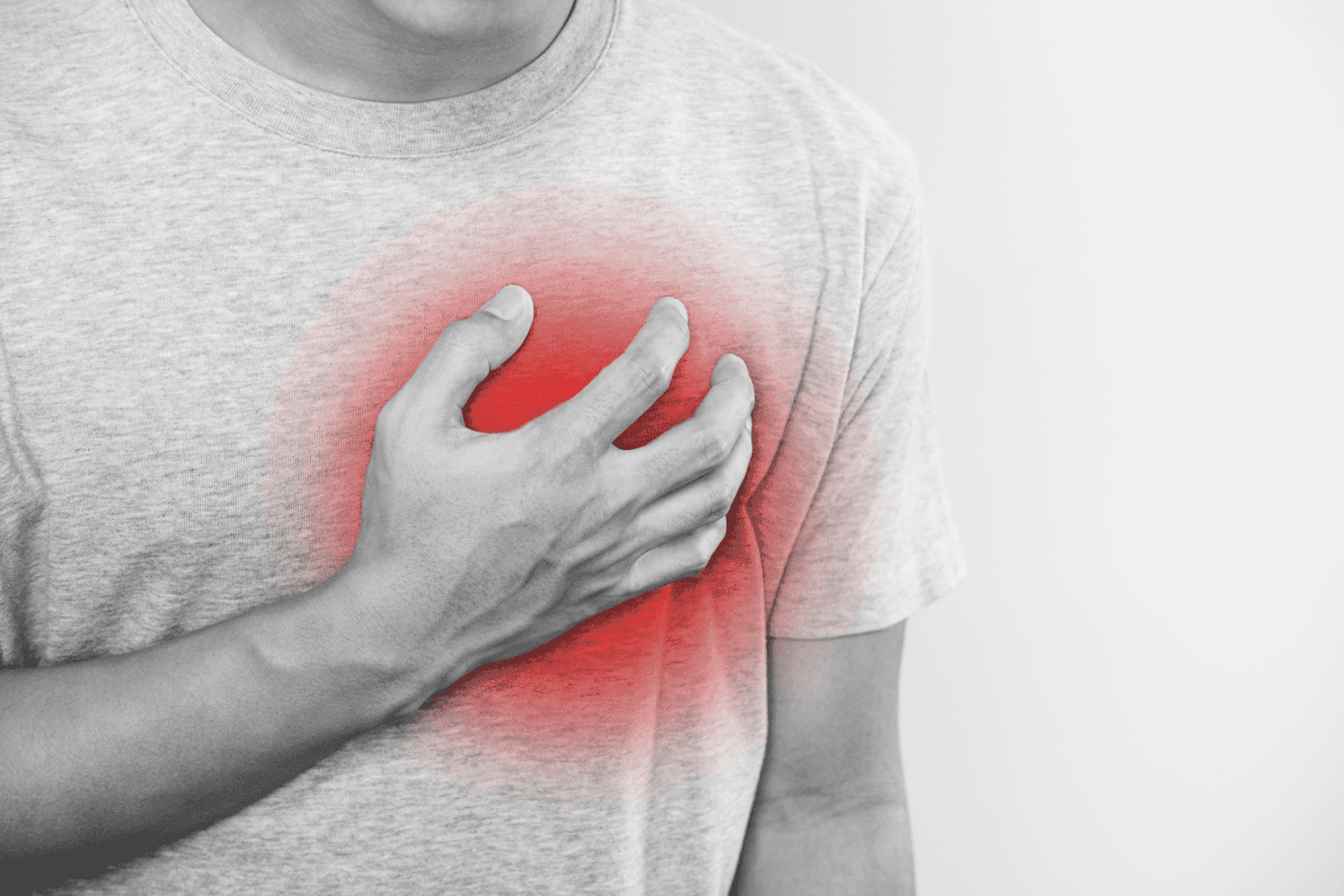Does Mounjaro Affect Fertility?
Understanding Mounjaro and Its UsesMounjaro is a prescription medication commonly prescribed for managing type 2 diabetes. It belongs to a class of drugs that help regulate [...]
Read More
Medically reviewed by Oghenefejiro Okifo | MD, Harvard Medical School | Henry Ford Hospital - Detroit, MI on August 18th, 2025.
Chest tightness or pain can provoke immediate anxiety. For many people, the instinctive fear is: “Is this a heart attack?” Not every ache signals a cardiac emergency, but distinguishing between harmless causes and life‑threatening ones is crucial. The goal is not to replace medical judgment, but to arm readers with clear signs, practical steps, and resources so action is timely and appropriate.
A heart attack occurs when blood flow to a portion of the heart muscle is blocked, depriving it of oxygen and causing tissue damage. Most commonly, this is due to a clot forming on top of a ruptured plaque in a coronary artery. The severity depends on the location and duration of the blockage; longer or larger blockages cause more extensive damage.
Rapid treatment restores blood flow and minimizes permanent injury. Over the past decades, advances in emergency care, medications, and interventional cardiology have sharply improved survival, but outcomes still depend heavily on how quickly care begins. That’s why recognizing the warning signs matters.
 Classic Warning Signs to Take Seriously
Classic Warning Signs to Take SeriouslySymptoms of a heart attack vary, but several classic features commonly suggest a cardiac cause and should prompt urgent evaluation:
Pressure, squeezing, fullness, or an intense tightness in the center of the chest that lasts more than a few minutes, or that comes and goes.
Discomfort spreading to one or both arms, the neck, jaw, back, or stomach.
Shortness of breath, with or without chest discomfort.
Cold sweats, nausea, lightheadedness, or sudden overwhelming fatigue.
These signs don’t all need to be present. Some people, particularly women, older adults, and people with diabetes, may have subtler presentations like shortness of breath, weakness, indigestion, or unexplained malaise. When in doubt, treat symptoms as potentially cardiac and seek immediate evaluation.
Chest discomfort has many causes beyond heart attacks. Distinguishing features can help, but none are perfectly reliable:
Cardiac chest pain: often described as deep, pressure‑like, or constricting; may be accompanied by sweating, nausea, and breathlessness; frequently worsens with exertion and improves with rest or nitroglycerin in angina, though heart attacks can occur at rest.
Non-cardiac chest pain: can arise from the lungs (pneumonia, pulmonary embolism), the digestive tract (acid reflux, esophageal spasm), musculoskeletal sources (costochondritis, muscle strain), or anxiety/panic attacks. These may be sharper, localized to one spot, reproducible by movement or palpation, or associated with specific triggers like swallowing.
Certain patterns raise concern and should lower the threshold for immediate emergency care:
Severe chest pain that began suddenly and is persistent or worsening.
Pain that radiates to the arm(s), jaw, or back, especially with sweating or fainting.
Chest pain accompanied by collapse, loss of consciousness, or severe shortness of breath.
Symptoms occurring during physical exertion or emotional stress in someone with heart disease risk factors.
Chest pain that changes with position, is sharp and reproducible by pressing over the chest wall, is clearly tied to breathing (pleuritic pain), or has a long history of similar episodes related to reflux or anxiety is less likely to be a heart attack. Still, exceptions exist, so persistence, worsening, or new concerning features warrant evaluation.
Understanding personal risk helps prioritize action. Traditional risk factors for coronary artery disease and heart attacks include:
Older age (risk rises progressively with age)
Male sex (higher risk earlier in life; women’s risk increases after menopause)
High blood pressure, high cholesterol, and diabetes
Tobacco use, obesity, and physical inactivity
Family history of premature coronary disease
Chronic kidney disease and certain inflammatory conditions
Even without these risk factors, heart attacks can occur. Conversely, someone with many risk factors may have chest pain from a benign cause. The presence or absence of risk factors should guide, but not replace, clinical judgment about urgency.
When chest tightness or pain occurs, time matters. Use this simple approach to decide when to call emergency services and which immediate actions to take:
These signs suggest a possible heart attack or other life‑threatening conditions and require immediate transport to an emergency department:
Severe, crushing, or pressure‑like chest pain lasting more than a few minutes.
Pain radiating to the arm(s), neck, jaw, or back with shortness of breath, sweating, fainting, or nausea.
Sudden collapse or fainting.
Severe shortness of breath not explained by known lung disease.
Do not drive oneself to the hospital if a heart attack is suspected; emergency responders can start life‑saving treatment on the way and get to the appropriate hospital faster.
If emergency services are on the way and a heart attack is suspected, chew and swallow one adult aspirin (325 mg) unless allergic or told by a clinician not to take aspirin. Aspirin helps reduce clotting and can limit heart damage if given promptly. Remain calm, sit upright, and rest; avoid unnecessary exertion. If prescribed nitroglycerin for known angina, follow directions.
Immediate in‑person emergency care is essential when a heart attack is suspected. For less acute chest pain, where symptoms are mild, atypical, or have an obvious noncardiac trigger, telehealth services provide rapid access to medical guidance that can direct the next steps.
Doctronic.ai offers fast, AI‑powered doctor visits and inexpensive telehealth video appointments that are available 24/7 across all 50 states. For people unsure whether chest tightness is urgent, Doctronic's AI doctor can synthesize up‑to‑date medical evidence to provide an initial assessment and advise whether emergency care is warranted. When appropriate, a video visit with a licensed clinician can guide safe outpatient management, help arrange follow‑up testing, or recommend immediate emergency transport.
Telehealth is useful when chest discomfort is mild, has clear alternative explanations (like heartburn after a spicy meal), or when evaluating recurrent, stable patterns (known angina with usual features). Virtual clinicians can review history, medications, and risk factors; observe breathing, skin color, and distress; and decide if urgent testing (ECG, troponin blood tests) or emergency care is needed.
For fast access to an AI‑enhanced evaluation and affordable 24/7 video visits, consider Doctronic.ai. The platform’s approach blends the speed and comprehensiveness of AI with human clinicians for searchable, evidence‑based guidance and convenient follow‑up.
When a person presents to an emergency department with chest pain, clinicians follow structured pathways to confirm or rule out a heart attack. Key elements include:
An electrocardiogram (ECG) to look for patterns of acute coronary blockage.
Blood tests for cardiac enzymes (troponin). Rising levels over hours indicate heart muscle damage.
Clinical assessment of vital signs, physical exam, and risk factors.
Imaging, such as chest X‑ray or CT, if alternative diagnoses (pneumothorax, pulmonary embolism) are considered.
Rapid pathways exist for patients with clear ECG evidence of a major blockage; such patients are often taken directly for emergency coronary intervention. Others may be observed and retested to confirm or exclude a heart attack.
Many heart attacks are preventable through a mix of lifestyle changes, medical control of risk factors, and regular healthcare engagement. Strategies that reduce risk include:
Blood pressure control through diet, exercise, and medications when necessary.
Cholesterol management, statins, and lifestyle modifications are effective at lowering long‑term risk.
Smoking cessation; quitting tobacco rapidly reduces cardiovascular risk.
Regular physical activity and weight management.
Good diabetes control and routine preventive care.
Regular checkups with primary care or cardiology can identify risk early and tailor preventive therapy. For convenient, timely primary care and consults, Doctronic.ai provides an accessible option for ongoing monitoring and guidance that draws on modern peer‑reviewed evidence to shape recommendations.
Myth: “Heart attacks always cause severe chest pain.”
Reality: Symptoms vary, some heart attacks are silent or present with atypical signs such as fatigue, indigestion, or fainting.
Myth: “If pain improves, it wasn’t a heart attack.”
Reality: Heart pain can wax and wane; temporary relief does not exclude serious disease. Prompt evaluation is important even if symptoms improve.
Myth: “Young people don’t get heart attacks.”
Reality: While risk increases with age, younger people can have heart attacks, particularly with risk factors like smoking, drug use (cocaine), familial hypercholesterolemia, or inflammatory diseases.
 Post‑event Care and Recovery
Post‑event Care and RecoveryAfter a confirmed heart attack, long‑term care focuses on preventing recurrence and restoring function. Interventions commonly include:
Medications (antiplatelets like aspirin, statins, beta‑blockers, ACE inhibitors) to reduce risk and support heart recovery.
Cardiac rehabilitation, which is a structured exercise and education program that improves outcomes and quality of life.
Lifestyle changes and close follow‑up to optimize blood pressure, cholesterol, and other risk factors.
Recovery is a shared effort between cardiology teams, primary care, rehabilitation specialists, and the patient. Telehealth can play a role in follow‑up visits, medication management, and symptom monitoring, especially for those with mobility constraints or limited local access to specialists.
Return to work, exercise, and driving depend on the extent of the heart attack and the individual's recovery plan. Cardiac rehabilitation programs and clinicians provide personalized timelines and safe activity progressions.
Chest tightness or pain should never be ignored. When symptoms are severe, sudden, or accompanied by other red flags, call emergency services immediately; every minute can affect outcomes. For less acute scenarios, accessible telehealth options can provide rapid, evidence‑based advice to determine whether emergency care is needed or if outpatient evaluation is appropriate.
Doctronic.ai combines AI‑powered assessments with human clinicians to offer fast, modern, and personal care, perfect for quick triage, second opinions, and convenient follow‑up. Visit Doctronic.ai for a prompt evaluation or to arrange an affordable 24/7 video visit that helps guide next steps.
Knowing the signs, understanding risk, and having clear action steps can save lives. When in doubt, err on the side of caution: seek urgent evaluation and rely on trusted medical services to decide the best path forward.
If you’re unsure whether chest tightness is urgent, skip the line and get an immediate, evidence‑based assessment from Doctronic, the #1 AI Doctor headquartered in NYC. Our AI doctor offers free AI visits that you can take to any clinician, remembers your medical history, synthesizes the latest peer-reviewed medicine, and pairs with affordable telehealth video visits (<$40) with licensed clinicians 24/7 across all 50 states. Over 10 million people have used Doctronic. Skip the line. Talk to an AI Doctor Now, for free.
When chest pain strikes, duration and associated symptoms matter more than intensity—persistent pressure with sweating or nausea demands immediate 911 activation. Time equals heart muscle, so don't delay seeking emergency care for concerning symptoms. If you're experiencing chest discomfort and unsure about the severity, Doctronic can help you evaluate your symptoms and determine the appropriate level of care.
Understanding Mounjaro and Its UsesMounjaro is a prescription medication commonly prescribed for managing type 2 diabetes. It belongs to a class of drugs that help regulate [...]
Read MoreUnderstanding Hydrocortisone Uses and DosagesHydrocortisone is a versatile medication primarily used to reduce inflammation and suppress the immune system in various [...]
Read MoreUnderstanding Zepbound and MounjaroWhen managing type 2 diabetes, patients often face a variety of medication options. Zepbound and Mounjaro are two such options gaining [...]
Read More